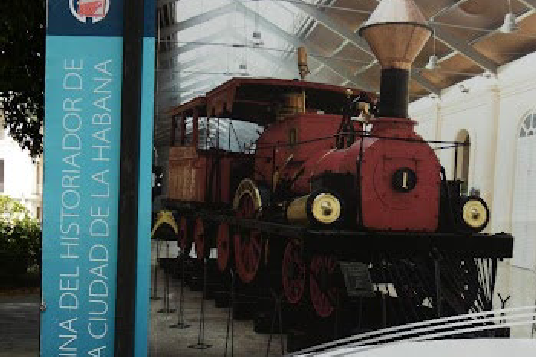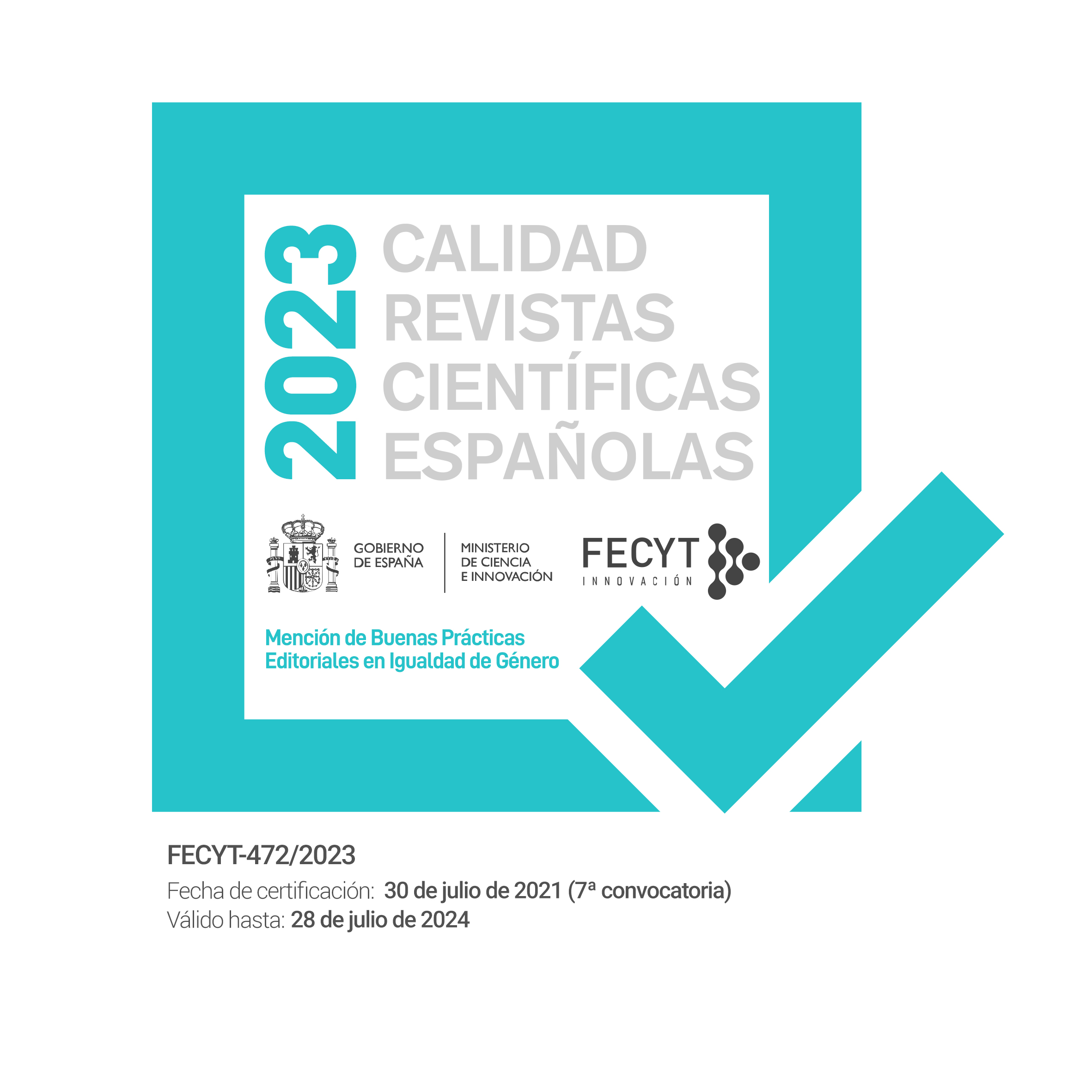El papel de la comunidad en la salvaguardia del patrimonio ferroviario cubano
DOI:
https://doi.org/10.30827/erph.32.2023.25327Palabras clave:
patrimonio industrial, patrimonio ferroviario, Cuba, comunidad, gestión, investigación, industrial heritage, railway heritage, Cuba, community, management, researchResumen
Las múltiples realidades que conforman la noción de cualquier patrimonio son aunadas en una constante: la comunidad. Desde el apego afectivo o el autorreconocimiento en bienes, usos o costumbres que marcan su realidad, es siempre el sentir y saberse parte de esta herencia cultural lo que garantiza su pervivencia como tal. Y el caso del patrimonio ferroviario cubano no es ajeno a esta realidad.
Sin embargo, la compleja realidad socio-económica y cultural cubana ha determinado que esta relación de identidad colectiva con el patrimonio ferroviario no se encuentre lo suficientemente imbricada y sea fácil separarla por su nivel de acercamiento, efectividad e impacto entre diferentes actores. Así se configuran tres grandes núcleos: el académico, el comunitario digital y el comunitario “real”. Cada uno de ellos tiene un rol determinante en la situación actual de este patrimonio, lo que puede trascender y lo que será olvidado, y en el desarrollo e impacto paralelo a la gestión y protección que desde las instancias estatales se lleven a cabo.
Solamente mediante la imbricación de todos los factores sociales en el contexto del patrimonio ferroviario cubano, podrá lograrse que este sea apreciado en toda su extensión y logre rebasar el actual estado de peligro de desaparición, y así ocupe el relevante papel que siempre ha tenido en la conformación y realidad de la nación cubana.
Descargas
Citas
AGUILAR CIVERA, I. (2001). “La investigación sobre el Patrimonio Industrial. Una revisión bibliográfica”. Dossier. Universidad de Valencia, n. 4, pp. 169–186.
ARGÜELLES, R. (2009). “Una mirada al patrimonio industrial de Caibarién”. Arquitectura y Urbanismo, n. 30 (2–3), pp. 70–77.
Batey Jaronú se insertará en las propuestas turísticas de Camagüey. (2021). Buen Viaje a Cuba. En https://www.buenviajeacuba.com/noticia/batey-jaronu-se-insertara-en-las-propuestas-turist/
BORROTO, D. O., y BORROTO, D. Y. (2015). “De ruinas a museos al aire libre. Preservación, reinterpretación y puesta en valor del patrimonio industrial de llanuras y alturas del nordeste de Las Villas (Yaguajay)”, en Taller Turismo, Patrimonio y Comunidad: Experiencias Para El Desarrollo Local. Yaguajay: Dirección Provincial de Transporte de Sancti Spíritu, pp. 1–15.
CLETO, M., RAMOS, H., y CALZADILLA, D. (2010). “Impacto de la Tarea Álvaro Reynoso en la Comunidad de Senado”, en Universidad 2010; Séptimo Congreso Internacional de Educación Superior. La Habana: Universidad de la Habana, pp. 7–12. Colegio Universitario San Gerónimo de La Habana. (2022). En http://www.sangeronimo.ohc.cu/postgrado/maestrias-y-doctorados/
COTO, L., PANCORBO, J., y SOTO, A. (2013). “El patrimonio industrial un nuevo producto turístico para la ciudad de Matanzas”. Retos Turísticos, n. 12 (3), pp. 1–13.
CUADROS, F. (2019). Arquitectura y ferrocarril: tipos, formas y usos en la construcción del ferrocarril de Andalucía. Jaén: Editorial Universidad de Jaén.
CUÉLLAR, D., y MARTÍNEZ, A. (2021). “Metodología y práctica para un inventario de viviendas ferroviarias de nueva construcción en España (1939-1990)”. TST. Transportes, Servicios y Telecomunicaciones, n. 44, pp. 126–151
Estación de Villanueva. (2013). Arquitectura Cuba. En http://www.arquitectura-cuba.blogspot.com
GARCÍA, A. (2011). “Julio Sagebien, arquitecto de Matanzas, ingeniero de Cuba”. Arquitectura y Urbanismo, n. XXXII, pp. 28–39.
GONZÁLEZ, I. (2013). El ferrocarril; Joya del patrimonio industrial. La Habana: Editorial Científico-Técnica.
GONZÁLEZ, L., ROLO, C., y DELGADO, R. (2014). “Catálogo de los puentes proyectados por Jules Sagebien en la provincia de Matanzas”. Revista de Arquitectura e Ingeniería, n. 8 (3), pp. 1–11.
GUTIÉRREZ, T. (2015). “Un paisaje cultural producido por el azúcar en Cuba”. Forum Patrimonio: Ambiente Construido e Patromônio Sustentávell, n. 8 (2), pp. 1–15.
GUTIÉRREZ, T., GONZÁLEZ, A., y COSTA, I. (2017). “Guía para el diagnóstico de conjuntos industriales azucareros: el caso del central Toledo, La Habana, Cuba”. Intervención, n. 8 (15), pp. 33–45.
GUTIÉRREZ, T., RODRÍGUEZ, R., y GONZÁLEZ, A. (2008). “En Toledo el azúcar da paso a otras formas de desarrollo”, en 14 Convención Científica de Ingeniería y Arquitectura. La Habana: Instituto Superior Politécnico “José Antonio Echeverría”, pp. 1–10.
JIMÉNEZ, N. (2016). “Tramos del primer ferrocarril”. Cubahora; Primera Revista Digital de Cuba. En línea. http://www.cubahora.cu/sociedad/tramos-del-primer-ferrocarril-fotos
KNOMAD. (2022). Migration data. En https://www.knomad.org/data/migration/emigration?page=6
LLOGA, R. (2014). “La Arquitectura asociada a los ferrocarriles en el Occidente de Cuba (1837-1898)”. Quiroga; Revista de Patrimonio Iberoamericano, n. 5, pp. 86–99.
LLOGA, R. (2016). “La labor de los ingenieros militares en los ferrocarriles de Cuba (1837-1898)”. Arquitectura y Urbanismo, n. XXXVII (3), pp. 1–14.
LLOGA, R., PELL, I., y SANABRIA, K. (2016). “Arquitectura ferroviaria en Cuba (1837 - 1931)”. En Arquitectura ferroviaria en América Latina; Cuba y Argentina. Buenos Aires: Ministerio para la Cultural de la Nación, pp. 45-68.
MORENO FRAGINALS, M. (2014). El Ingenio. Complejo económico-social cubano del azúcar. La Habana: Ciencias Sociales.
OLAIZOLA, J. (2012). “175 años de historia ferroviaria en Cuba (¡Y España!)”. Historias del tren. En http://historiastren.blogspot.com.es/2012/11/175-anos-de-historia-ferroviaria-en.html
PELL DELGADO, I. (2018). “Reliquias centenarias del patrimonio cultural cubano: las locomotoras a vapor y su protección”. Santiago, n. 147, pp. 489–502.
PRAT, J. M., Y CÀNOVAS, G. (2012). “El patrimonio industrial como dinamizador del territorio. El caso del ecomuseo La Farinera, en Castelló d’Empúries (Cataluña)”. Documents d’Anàlisi Geogràfica, n. 58 (1), pp. 79–100. DOI: https://doi.org/10.5565/rev/dag.192
QUENZER, B. (2016). “El tren de Hershey de Cuba”. Magazine. En línea https://adriboschmagazine.wordpress.com/2016/04/20/el-tren-hershey-de-cuba-havana-times-en-espanol/
QUIROGA, M. (2016). “Odd facts about the town of Bejucal”. Havana Times. En línea https://havanatimes.org/features/odd-facts-about-the-town-of-bejucal/
RIZO, L., Y LÓPEZ, E. (2015). “El patrimonio arquitectónico de Santiago de Cuba vinculado a la industria ligera en el período republicano: 1902-1958”. Arquitectura y Urbanismo, n. XXXVI (3), pp. 20–34.
RODRÍGUEZ, Y. (2013). “La Estación Central de La Habana”. Habana Radio. En http://www.habanaradio.cu/articulos/la-estacion-central-de-la-habana-ii/
SALINAS, E., y DELGADO, F. (2016). “Patrimonio Industrial y desarrollo turístico local. El caso del antiguo Central Hershey, Santa Cruz del Norte, Mayabeque, Cuba”. Revista Estudios Ambientales, n. 4(2), pp. 23–40. DOI: https://doi.org/10.47069/estudios-ambientales.v4i2.1021
SANTAMARÍA, A. (Coord.). (2019). Azúcar, patrimonio y paisaje en Cuba. Madrid: Digital CSIC.
SANTAMARÍA, A. (Coord.). (2020). Ferrocarril, historia, espacio y patrimonio en Cuba. Madrid: Digital CSIC.
SANTAMARIA, A. (1998). “Historia de los ferrocarriles en Cuba, 1830-1995”. En J. Sanz Fernández (Ed.), Guía histórica de los ferrocarriles Iberoamericanos (1830-1995). Madrid: Ministerio de Fomento, pp. 6–82.
SANTAMARÍA, A., y GARCÍA, L. M. (1999). “A propósito de la industria azucarera en Cuba (1860-18777): Mano de obra y tecnología”. En M. Guicharnaud-Tollis (Ed.), Le sucre dans l’espace caraïbe hispanophone XIX et XX siècles. París: L’Harmattan, pp. 71–94.
SANTOS Y GANGES, L., Y LALANA SOTO, J. L. (2009). “Las fronteras del patrimonio industrial”. Llámpara: Patrimoio Industrial, n. 2, pp. 7–20.
SCHLACHTER, A. (2014). “Cubano el primer ferrocarril caribeño”. Cubahora. En https://www.cubahora.cu/blogs/curiosidades-geograficas/cubano-el-primer-ferrocarril-caribeno
SILVA, P. (2013). “Ferrocarriles de Cuba”. Mangocho. En http://mangochoamat.blogspot.com.es/2013/06/ferrocaril-en-cuba.html
SIMONÓ, J. M., OCHOA, M., y LICEA, J. E. (2021). “Consideraciones sobre la puesta en valor del patrimonio industrial en el destino de Santiago de Cuba”. Estudios Turísticos, n. 221, pp. 95–112. DOI: https://doi.org/10.61520/et.2212021.46
TARTARINI, J. (Coord.). (2016). Arquitectura ferroviaria de América Latina; Cuba y Argentina, 1ra ed. Buenos Aires: Ministerio de Cultura de la Nación. DOI: https://doi.org/10.20396/lobore.v10i2.8646188
UNITED NATIONS WORLD POPULATION PROSPECTS. (2020). Población total. Cuba. En https://datos.bancomundial.org/indicator/SP.POP.TOTL?locations=CU
VENEGAS, C. (2008). “Los andenes de la memoria”. El Fogonero. En http://elfogonerovenegas.blogspot.com/p/estaciones_4.html
VILLARREAL, F., y RIZO, L. (2017). “El patrimonio ferroviario en Santiago de Cuba: Aportaciones a la conformación urbano arquitectónica del territorio”. Oculum Ensaios; Revista de Arquitetura e Urbanismo, n. 4 (12), pp. 293–309. DOI: https://doi.org/10.24220/2318-0919v14n2a3896
ZANETTI, O., y GARCÍA ÁLVAREZ, A. (1987). Caminos para el azúcar. La Habana: Ediciones Boloña.

Descargas
Publicado
Cómo citar
Número
Sección
Licencia
Derechos de autor 2023 Lays Díaz Ramirez

Esta obra está bajo una licencia internacional Creative Commons Atribución-NoComercial 4.0.
Las/os autoras/es conservan los derechos de autoría y otorgan a la revista el derecho de primera publicación (reproducción, edición, distribución, comunicación pública y exhibición).
Más infomación en Sobre la revista > Aviso de derechos de autor/a














